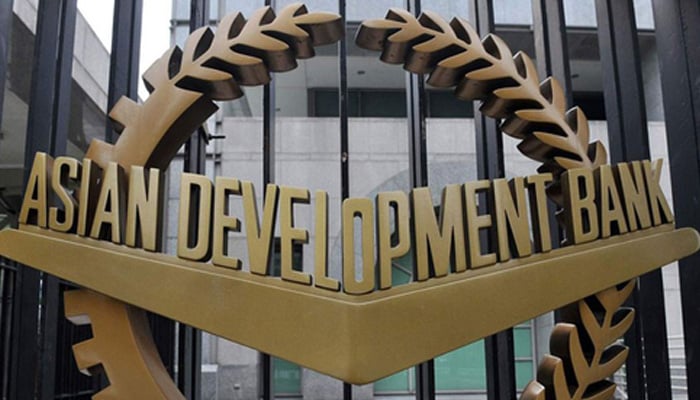Carec to enhance Pakistan’s exports to China: ADB
Asian Development Bank (ADB) sees opportunities for Pakistan in Carec program to expand and diversify its exports to China and central Asian states, underscoring a need for increasing ownership of the projects for regional connectivity and economic cooperation.
KARACHI: Asian Development Bank (ADB) sees opportunities for Pakistan in Carec program to expand and diversify its exports to China and central Asian states, underscoring a need for increasing ownership of the projects for regional connectivity and economic cooperation.
ADB Director Regional Cooperation and Operation Coordination Safdar Pervez said there has to be greater awareness in Pakistan about the potential benefits of expanding relations and trade with other countries of Carec – a program launched two decades back by the Manila-based lender to encourage economic cooperation among 11 member countries.
“We feel there is a lot of recognition and ownership already there,” Pervez said, speaking at Sustainable Development Policy Institute.
“But, there is always some room to build on that.”
Pakistan joined Carec in 2010 and since then the program has invested about $1.5 billion on projects largely related to building trade and transport connectivity.
“We have a pipeline of next three years under which we plan to support Pakistan with another $1.7 billion,” Pervez added.
Other Carec members include Afghanistan, Azerbaijan, China, Georgia, Kazakhstan, Kyrgyz Republic, Mongolia, Pakistan, Tajikistan, Turkmenistan and Uzbekistan.
Pervez said Pakistan today has very high trade deficit and one way to get out of this large trade deficit is to find ways of expanding and diversifying exports.
Carec envisages corridor development connecting Pakistan, China and Central Asian states to European markets.
“We see that with the Carec block as a whole Pakistan’s exports have been declining,” Pervez said. “We estimate that over the last five years there has been about 37 percent decline in Pakistan’s exports to these countries, although the potential is large.”
In addition to infrastructure development, ADB is also trying to focus on soft components, which are to do with trade facilitation, such as improving rules and regulations for trade, trying to harmonise customs procedures and systems, promoting concept of single window so that the cost of traction of trade actually declines.
“These are the areas where we feel that Carec program is among the most relevant programs for Pakistan,” the ADB official said. “We are trying to explore opportunities to get Pakistan closer to other Carec member countries on issues such as economic corridor development, tourism, education and other areas.”
The ADB official said the focus on economic cooperation can be a very strong foundation to “build greater peace and greater security”.
He said Pakistan’s ranking on global cross-border trade indicators needs to be improved substantially.
“If you look at the World Bank’s doing business survey, again Pakistan’s performance can substantially be enhanced and improved.”
Pervez said the country needs to improve in the area of non-tariff barriers, such as phytosanitary standards.
“The non-tariff barriers are becoming much more important. They are bigger obstacles to Pakistani exports today,” he added. “Tariffs across the world are coming down. Pakistan still has relatively higher tariffs and there is room for improvement.”
The ADB official said the country can become a much more attractive destination for trade, exports and foreign direct investments if it is able to deal with infrastructure bottlenecks, simplify customs procedures, cut down red-tap and create more enabling environment for private sector. Carec has six corridors and two of the six corridors that go through Pakistan are actually also on the China-Pakistan Economic Corridor (CPEC) route.
“So there is already a strong alignment already in terms of corridor development,” ADB official said. “There is big need for regional initiatives such as CPEC and Carec to coordinate with each other so that synergies can be built…. any potential duplication can be avoided.”
-
 Spotify Introduces New Monthly Subscription Pricing Plan For 2026
Spotify Introduces New Monthly Subscription Pricing Plan For 2026 -
 Shocking Prediction About Meghan Markle's Career In 2026
Shocking Prediction About Meghan Markle's Career In 2026 -
 Kate Middleton Hosts Reception In London As Prince William Out On Engagement
Kate Middleton Hosts Reception In London As Prince William Out On Engagement -
 Mel C Teases 'precious' Future Plans
Mel C Teases 'precious' Future Plans -
 Teyana Taylor On Julia Roberts Telling Her To 'eat A Sandwich' At Golden Globes: 'Started Crying'
Teyana Taylor On Julia Roberts Telling Her To 'eat A Sandwich' At Golden Globes: 'Started Crying' -
 Minneapolis: ICE Officer Fires Bullet After Migrant Attacks With A Shovel
Minneapolis: ICE Officer Fires Bullet After Migrant Attacks With A Shovel -
 Prince William Gets 'mobbed' By Animals During Rural Engagement
Prince William Gets 'mobbed' By Animals During Rural Engagement -
 Angelina Jolie Finally Escaping L.A.?
Angelina Jolie Finally Escaping L.A.? -
 Matthew McConaughey Takes Legal Action To Save THIS Iconic Phrase From AI Misuse
Matthew McConaughey Takes Legal Action To Save THIS Iconic Phrase From AI Misuse -
 Jodie Foster Reflects On Harsh Reality Of Why She Escaped Sexual Abuse As Actress
Jodie Foster Reflects On Harsh Reality Of Why She Escaped Sexual Abuse As Actress -
 Prince Harry, Meghan Markle To Have Baby In 2026?
Prince Harry, Meghan Markle To Have Baby In 2026? -
 Bella Hadid Steals The Spotlight At 'The Beauty' Premiere
Bella Hadid Steals The Spotlight At 'The Beauty' Premiere -
 Taylor Swift 'worst Photos': Singer's Not-so-perfect Moments Spark Debate
Taylor Swift 'worst Photos': Singer's Not-so-perfect Moments Spark Debate -
 Arizona Mother Traces Missing Son Living In Neighbour’s Home After Killing Hm
Arizona Mother Traces Missing Son Living In Neighbour’s Home After Killing Hm -
 OpenAI Launches ChatGPT Translate To Rival Google Translate
OpenAI Launches ChatGPT Translate To Rival Google Translate -
 Top AI Themes Poised To Shape 2026: Here’s How
Top AI Themes Poised To Shape 2026: Here’s How




